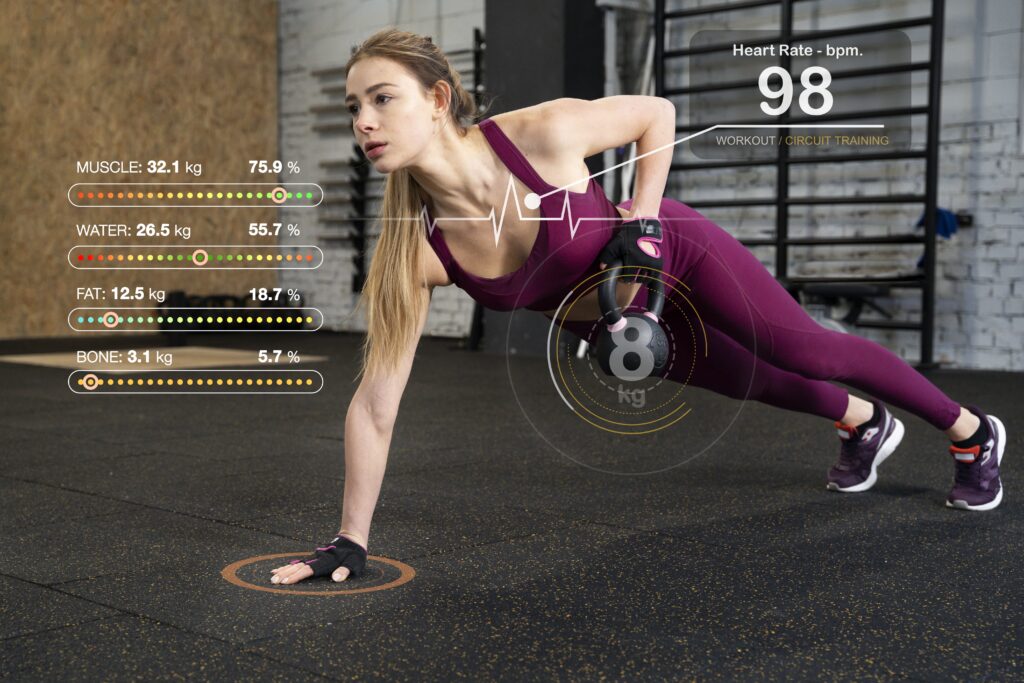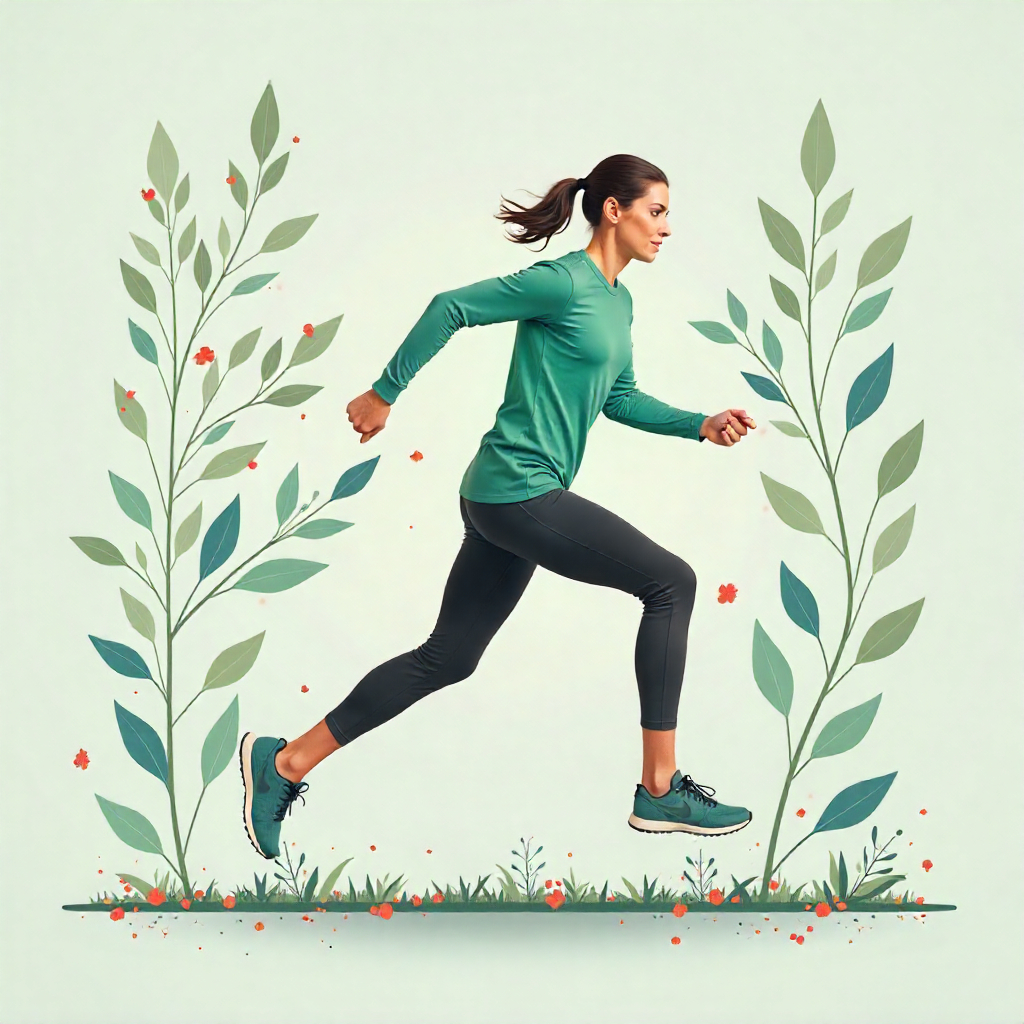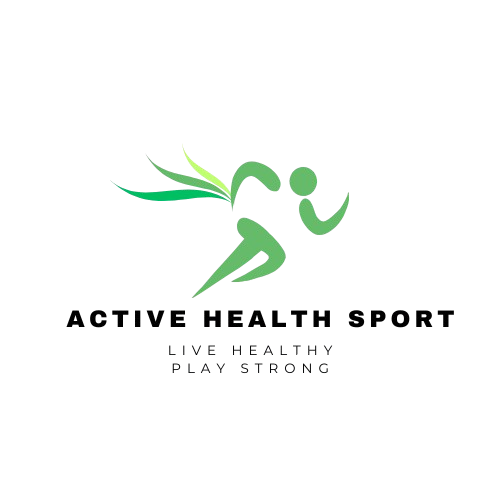Staying productive and maintaining focus can be challenging. Whether you’re a student, professional, or just someone who wants to improve their daily performance, short naps can make a significant difference. Research suggests that power naps can improve mental clarity, enhance cognitive functions, and provide a daily energy boost to help you perform at your best.
Many people assume that taking a nap during the day is a sign of laziness, but science proves otherwise. In this blog, we’ll explore how short naps can help improve focus, reduce stress, and optimize overall well-being. So, let’s stay with us!
What is a Power Nap?
A power nap is a short sleep session that typically lasts between 10 to 30 minutes. Unlike longer naps, which can leave you feeling groggy due to entering deeper sleep stages, a well-timed power nap can provide an instant mental refresh without sluggishness. This quick rest period is designed to increase mental clarity, enhance focus, and provide a daily energy boost without negatively affecting nighttime sleep.
Key Characteristics of a Power Nap:
- Duration: Typically 10 to 30 minutes, preventing deep sleep and avoiding grogginess.
- Best Time: Early afternoon (between 1:00 PM and 3:00 PM) to align with the body’s natural energy dip.
- Purpose: To restore mental clarity, improve focus, and offer a daily energy boost for better productivity.
- Effect: Enhances memory, cognitive performance, and mood regulation while reducing stress.
Short naps work by allowing the brain to rest in the lighter stages of sleep, primarily Stage 1 and Stage 2 of the sleep cycle. This prevents sleep inertia, which is the groggy, disoriented feeling that often follows longer naps that enter deep sleep.
Also, Read the Latest Blog On: Why Power Naps Are Essential for Mental Health and Energy (2025)
The Science Behind Power Naps
Our bodies follow a natural circadian rhythm, which regulates wakefulness and sleepiness. One of the key dips in energy occurs midday, usually between 1:00 PM and 3:00 PM. This is why many people experience an afternoon slump, often reaching for caffeine or sugary snacks to stay alert. However, a power nap provides a healthier alternative by working with your body’s natural rhythm rather than against it.
During a power nap, the brain undergoes:
- Memory consolidation – Short naps help the brain process and store newly acquired information, improving recall and learning ability.
- Neurological reset – Resting allows the brain to flush out metabolic waste and toxins, reducing mental fatigue.
- Stress reduction – A brief period of relaxation lowers cortisol levels, helping to reduce anxiety and improve emotional stability.
Why 10 to 30 Minutes is the Ideal Nap Duration
A power nap is most effective when it lasts 10 to 30 minutes because it prevents entering deep sleep (slow-wave sleep or REM sleep).
- 0-5 minutes: Not enough time for the brain to enter a restorative phase.
- 10-20 minutes: Ideal duration for a boost in alertness, focus, and mood.
- 30 minutes: The longest recommended nap time before experiencing grogginess.
- 45+ minutes: Enters deep sleep, increasing the risk of sleep inertia and interfering with nighttime sleep.
To maximize benefits, it’s crucial to wake up before deep sleep begins, ensuring you feel refreshed rather than sluggish.
How Power Naps Differ from Regular Naps
| Feature | Power Nap | Regular Nap |
| Duration | 10-30 minutes | 60-90 minutes |
| Purpose | Quick refresh, boost focus, energy | Deep sleep, full recovery |
| Sleep Stages | Light sleep (Stage 1 & 2) | Deep sleep (Stage 3 & REM) |
| Effect on Productivity | Increases alertness & mental clarity | May cause grogginess if too long |
| Best for | Work performance, study breaks, mid-day energy boost | Work performance, study breaks, midday energy boost |
How Power Naps Improve Mental Clarity
A well-timed power nap can significantly enhance mental clarity, helping you stay alert, focused, and productive throughout the day. By allowing your brain to reset, power naps offer an effective way to combat fatigue and improve cognitive performance.
1. Boosts Cognitive Performance
Studies show that short naps enhance problem-solving skills, creativity, and memory retention. A brief rest period allows the brain to process and consolidate new information, improving learning ability and mental efficiency.
- Memory Retention: The brain processes and stores information more effectively after a short nap, making it easier to recall details.
- Creativity Enhancement: A well-rested brain can make new connections, leading to innovative thinking.
- Faster Reaction Time: Power naps improve motor skills and speed up response times, essential for activities that require sharp reflexes.
2. Enhances Concentration
If you’re feeling distracted or struggling to maintain focus, a power nap can restore your attention span and increase productivity. Short naps reset the brain, making tasks feel more manageable and improving overall work efficiency.
- Improves Focus: A refreshed mind can concentrate better on complex tasks.
- Reduces Errors: Increased alertness leads to fewer mistakes, especially in work requiring precision.
- Better Decision-Making: Naps help in evaluating situations more clearly and responding effectively.
3. Reduces Mental Fatigue
Feeling drained or mentally exhausted? A power nap helps recharge your brain, preventing burnout and maintaining high levels of daily energy.
- Restores Alertness: A quick nap reactivates brain function, helping you feel refreshed.
- Lowers Stress Levels: Short naps reduce cortisol, the stress hormone, making you feel calmer.
- Prevents Burnout: Regular power naps improve resilience, keeping mental fatigue at bay.
4. Regulates Mood and Emotional Stability
Lack of rest can make you feel irritable, anxious, or overwhelmed. A power nap helps regulate mood by balancing key neurotransmitters, such as serotonin and dopamine, leading to a positive mindset.
- Boosts Motivation: Feeling energized increases enthusiasm for daily tasks.
- Reduces Anxiety: Lower stress levels help you handle challenges more effectively.
- Improves Social Interactions: Better emotional regulation leads to healthier communication and relationships.
5. Supports Brain Detoxification
During a power nap, the brain undergoes a natural cleansing process, flushing out toxins and metabolic waste that accumulate during wakefulness. This process is essential for long-term cognitive health and can help prevent mental fog.
- Clears Out Brain Waste: Naps support the brain’s glymphatic system, which removes harmful proteins linked to cognitive decline.
- Prevents Mental Fog: A refreshed brain can think faster and work more efficiently.
- Supports Long-Term Brain Health: Regular napping can lower the risk of neurodegenerative diseases like Alzheimer’s.
The Best Way to Take a Power Nap for Maximum Mental Clarity
To fully benefit from a power nap, follow these guidelines:
- Nap in the Early Afternoon: Between 1:00 PM and 3:00 PM is ideal to align with your circadian rhythm.
- Keep It Between 10-30 Minutes: Avoid entering deep sleep to prevent grogginess.
- Find a Quiet, Comfortable Space: Minimize distractions for better relaxation.
- Use a Sleep Mask or Earplugs: Block out light and noise to enhance sleep quality.
- Set an Alarm: Ensure you wake up at the right time to avoid oversleeping.

Daily Energy Boost: Why Napping is Better Than Caffeine
Many people rely on coffee or energy drinks to stay alert, but power naps provide a healthier alternative for a daily energy boost.
1. Natural Energy Restoration
Unlike caffeine, which only masks fatigue, short naps help restore energy naturally by allowing the brain to reset.
2. No Jitters or Crash
Caffeine can cause jitters and an energy crash later in the day. A power nap offers steady energy without negative side effects.
3. Supports Long-Term Health
Regular caffeine consumption can lead to dependence and sleep disturbances. Napping provides an energy boost without disrupting your sleep cycle.
Power Naps and Stress Reduction
Stress is a common issue that affects mental and physical health. Taking short naps can be an effective way to combat stress and promote relaxation.
1. Lowers Cortisol Levels
When you’re stressed, your body produces cortisol, the stress hormone. A power nap can help regulate cortisol levels, keeping stress in check.
2. Improves Mood and Emotional Balance
Lack of sleep can make you irritable and anxious. Short naps help improve mood by replenishing neurotransmitters responsible for relaxation and happiness.
3. Helps in Stress Management
A quick nap provides a mental reset, allowing you to handle challenges more calmly and efficiently.
How to Take the Perfect Power Nap
Taking a power nap the right way can make a big difference in how refreshed and energized you feel afterward. While a quick nap can significantly improve mental clarity, energy levels, and stress reduction, certain factors such as timing, environment, and consistency play a crucial role in ensuring you wake up feeling rejuvenated instead of groggy.
Follow these steps to get the maximum benefits from your power nap:
1. Find a Quiet and Comfortable Space
The environment you choose for your nap is just as important as the nap itself. Finding the right spot can make it easier to fall asleep and maximize the benefits of resting your brain.
- Choose a Dark or Dimly Lit Area: Darkness helps trigger melatonin production, the hormone responsible for sleep. If a dark room isn’t available, try using an eye mask.
- Reduce Noise Distractions: A quiet space ensures uninterrupted rest. If silence isn’t possible, noise-canceling headphones or white noise machines can help.
- Get Comfortable: Whether it’s a recliner, a couch, or even your work desk, a comfortable position helps you fall asleep faster.
- Maintain a Cool Temperature: A slightly cool environment (around 65-70°F or 18-21°C) promotes better relaxation and faster sleep onset.
Read the Latest Expert Guide On: Why Blue Light Disrupts Sleep and How to Avoid It
2. Set an Alarm to Avoid Oversleeping
The key to an effective power nap is keeping it short, ideally between 10 to 30 minutes. Anything longer can result in sleep inertia, a state of grogginess that can leave you feeling worse than before.
- 10-15 Minutes: Ideal for a quick energy boost and improved alertness.
- 20-30 Minutes: Enhances memory, creativity, and problem-solving skills while still preventing grogginess.
- Longer Than 30 Minutes: Can lead to deep sleep, making it harder to wake up feeling refreshed.
To avoid oversleeping, always set an alarm for 20-30 minutes before your nap begins.
3. Nap at the Right Time
Timing your power nap correctly is crucial for getting the most out of it. The best window for napping is between 1:00 PM and 3:00 PM, which aligns with the body’s natural energy dip in the afternoon.
- Why Not Nap Too Late? Napping after 3:00 PM can interfere with your nighttime sleep, making it harder to fall asleep at bedtime.
- Early Morning Naps: Generally not recommended unless you’re sleep-deprived, as they can make you feel more sluggish rather than refreshed.
- Align With Your Circadian Rhythm: Your body naturally experiences a drop in energy levels during the afternoon slump, making this the ideal time to rest.
4. Use Relaxation Techniques to Fall Asleep Faster
If you struggle to fall asleep quickly, using relaxation techniques can help your body and mind transition into rest mode. Here are a few effective strategies:
Deep Breathing Exercises
Practicing deep breathing helps slow your heart rate and signals to your brain that it’s time to relax.
- 4-7-8 Breathing Technique: Inhale for 4 seconds, hold for 7 seconds, and exhale for 8 seconds.
- Diaphragmatic Breathing: Breathe deeply through your belly instead of your chest to promote relaxation.
Calming Music or White Noise
Listening to soothing music, nature sounds, or white noise can create a peaceful environment and help block out distractions.
- Binaural Beats: Certain sound frequencies can enhance relaxation and improve sleep quality.
- Guided Meditation: Apps like Headspace or Calm offer short nap meditations to help you fall asleep faster.
Progressive Muscle Relaxation
This technique involves tensing and relaxing different muscle groups, helping your body ease into a restful state.
- Start with your feet and work your way up to your head, focusing on each muscle group for a few seconds.
Using these methods consistently can help train your body to fall asleep faster and wake up more refreshed.
5. Keep a Consistent Napping Routine
Like any habit, power napping is most effective when done consistently. By napping at the same time every day, your body will learn to anticipate and optimize your rest period, making it easier to fall asleep quickly and wake up energized.
- Set a Daily Nap Schedule: Even on weekends, aim to nap at the same time each day.
- Keep Your Nap Duration Consistent: Whether you prefer 15, 20, or 30 minutes, sticking to a set duration prevents sleep disruptions.
- Listen to Your Body: If you don’t feel tired, don’t force yourself to nap—the goal is to refresh, not disrupt sleep patterns.
A consistent power nap routine helps regulate energy levels, making your daily performance and mood more stable.

Additional Tips for a Better Power Nap
1. Try a Caffeine Nap (Coffee Nap)
A caffeine nap involves drinking a small cup of coffee right before napping. Since caffeine takes about 20-30 minutes to kick in, it helps you wake up feeling even more energized and alert.
How It Works:
- Drink a small cup of coffee (~100 mg caffeine).
- Nap for 15-20 minutes immediately after drinking.
- Wake up feeling refreshed as the caffeine starts working.
This technique is especially useful if you need a quick productivity boost in the afternoon.
2. Avoid Heavy Meals Before Napping
Eating a large meal right before a nap can cause discomfort and bloating, making it harder to relax. If you’re hungry, opt for a light snack like:
- Almonds or walnuts (rich in magnesium for relaxation)
- A banana (contains tryptophan, which aids in sleep)
- Yogurt with honey (balances blood sugar and promotes rest)
3. Use Essential Oils for Relaxation
Scents like lavender, chamomile, and sandalwood can promote relaxation. Try diffusing essential oils or dabbing a few drops onto your pillow before napping.
4. Avoid Blue Light Exposure Before Your Nap
Looking at phones, tablets, or computers before napping can delay melatonin production, making it harder to fall asleep. Try to disconnect from screens at least 10 minutes before napping.
Why Power Naps Should Be Part of Your Daily Routine
Taking a power nap is a luxury way to boost focus, enhance cognitive function, and reduce stress.
Key Takeaways for the Perfect Power Nap:
✅ Keep naps between 10-30 minutes to avoid grogginess.
✅ Nap between 1:00 PM and 3:00 PM for maximum benefits.
✅ Create a restful environment (dark, quiet, comfortable).
✅ Use relaxation techniques to fall asleep faster.
✅ Be consistent with your napping schedule for long-term results.
Power Naps for Different Lifestyles
Short naps can benefit everyone, but their impact varies depending on lifestyle and profession.
1. Students and Learners
A power nap can improve memory retention, making it easier to study and absorb new information.
2. Office Workers
Many professionals experience an afternoon slump. A quick nap can enhance productivity and improve work efficiency.
3. Athletes and Fitness Enthusiasts
Napping helps with muscle recovery, reaction time, and overall physical performance.
4. Entrepreneurs and Business Owners
Running a business requires sharp decision-making skills. Regular power naps can improve focus and problem-solving abilities.
Real-Life Case Studies | How Short Naps Transformed Lives
At Active Health Sport, we often hear from individuals who have experienced significant improvements in their well-being simply by incorporating short naps into their daily routines. Here are three real-life stories of people who discovered the power of short naps in managing stress, improving focus, and enhancing their overall mood.
1. Nicole Herdiaa – Beating Afternoon Fatigue with Power Naps
Nicole Herdiaa, a 34-year-old commerce executive, struggled with afternoon fatigue for years. Long work hours, back-to-back meetings, and constant screen time left her mentally drained by mid-afternoon. She relied on caffeine and energy drinks to push through the day, but the effects were short-lived, often leading to restlessness at night.
After reading about the benefits of short naps, Nicole decided to experiment with a 20-minute nap during her lunch break. Within a week, she noticed a drastic change. Instead of reaching for a second cup of coffee, she felt naturally refreshed. Her mood improved, her creativity soared, and she no longer experienced the energy crash in the late afternoon. Today, Nicole swears by her midday naps as a crucial part of her productivity and well-being.
2. Jose Luna – Managing Stress and Anxiety Through Napping
Jose Luna, a 41-year-old firefighter, faces high levels of stress daily. His demanding job requires split-second decisions, intense physical exertion, and long, unpredictable shifts. The constant adrenaline spikes took a toll on his mental and physical health, leading to chronic stress and occasional anxiety attacks.
On the recommendation of a sleep specialist, Jose started incorporating short naps into his routine. Whenever he had a break between shifts, he would take a 15-minute nap in a quiet room. At first, he was skeptical, but over time, he realized that these short rests helped him reset. His stress levels reduced, and he felt calmer and more prepared to handle the unpredictability of his job. His colleagues even noticed that he seemed more composed and energized during intense situations.
Now, Jose considers short naps a form of self-care, allowing him to perform better while maintaining his mental well-being.
3. Karliss Andrea – Fighting Insomnia and Improving Focus
For years, Karliss Andrea, a 29-year-old graduate student, struggled with insomnia. Late-night studying, screen exposure, and an inconsistent sleep schedule left her exhausted during the day. She had trouble concentrating in class and often felt irritable and overwhelmed.
After researching sleep cycles, Karliss decided to introduce controlled power naps into her schedule. She started with a 10-minute nap in the early afternoon and gradually adjusted based on what felt best for her body. To her surprise, these short naps didn’t interfere with her nighttime sleep. Instead, they helped her stay more alert and reduced the grogginess she previously experienced.
Over time, Karliss found that she no longer needed to rely on excessive caffeine. Her academic performance improved, and she felt more in control of her energy levels. Today, she advocates for short naps among her fellow students, proving that even a small change can have a significant impact.
The takeaway!
Nicole, Jose, and Karliss each had different challenges, but they all found a solution in short naps. Whether it’s improving energy, reducing stress, or fighting insomnia, the right nap at the right time can work wonders. If you’re feeling drained or struggling with focus, why not try a short nap and see how it transforms your day?
Common Myths About Power Naps
Despite the many benefits, there are several misconceptions about napping. Let’s debunk some common myths:
Myth 1: Naps Are Only for Lazy People
Truth: Napping is a scientifically proven way to boost productivity and energy. Many successful people, including Albert Einstein and Leonardo da Vinci, were known to take short naps.
Myth 2: Power Naps Cause Sleep Problems
Truth: Short naps enhance sleep quality by reducing overall fatigue. Just make sure to avoid long naps late in the day.
Myth 3: Coffee Works Better Than Naps
Truth: While coffee provides temporary alertness, naps offer long-term cognitive and energy benefits.
Final Thoughts | Make Power Naps a Daily Habit!
Incorporating power naps into your daily routine is a simple yet effective way to boost mental clarity, reduce stress, and enhance overall well-being. Whether you’re a student juggling coursework, a professional navigating demanding deadlines, or an entrepreneur managing multiple responsibilities, a short nap can be the reset your mind and body need.
These micro-rests help regulate emotions, improve problem-solving skills, and even support heart health. Instead of relying on caffeine or pushing through exhaustion, consider taking a strategic break to recharge naturally.
Start incorporating short naps today and experience the difference they can make in your overall health and performance. Sometimes, all you need is a few minutes of rest to power through the day with focus and vitality! If you have any questions in your mind, please comment below or reach out to us!
You might also like…
- Why Mobility Is the Real Strength You’re Missing in Fitness
 The Rise of Stiff Strength The modern fitness world has long celebrated heavy lifting, muscle growth, and endurance records, but it’s quietly ignored the foundation that makes all of those possible: mobility. In… Read more: Why Mobility Is the Real Strength You’re Missing in Fitness
The Rise of Stiff Strength The modern fitness world has long celebrated heavy lifting, muscle growth, and endurance records, but it’s quietly ignored the foundation that makes all of those possible: mobility. In… Read more: Why Mobility Is the Real Strength You’re Missing in Fitness - Why Functional Strength Outperforms Traditional Gym Workouts
 You can deadlift 300 pounds, but can you lift your child without back pain?You can squat twice your bodyweight, but can you climb stairs or carry groceries with ease? These questions reveal a… Read more: Why Functional Strength Outperforms Traditional Gym Workouts
You can deadlift 300 pounds, but can you lift your child without back pain?You can squat twice your bodyweight, but can you climb stairs or carry groceries with ease? These questions reveal a… Read more: Why Functional Strength Outperforms Traditional Gym Workouts - Why Your Fitness Plateau Is More About Movement Quality
 You’ve been consistent. You show up to your workouts, track your progress, and push hard. Yet somehow, your strength, endurance, or physique hasn’t improved in weeks or even months. Most people blame motivation… Read more: Why Your Fitness Plateau Is More About Movement Quality
You’ve been consistent. You show up to your workouts, track your progress, and push hard. Yet somehow, your strength, endurance, or physique hasn’t improved in weeks or even months. Most people blame motivation… Read more: Why Your Fitness Plateau Is More About Movement Quality

Kait Amazra is the founder and lead writer of Active Health Sport. With over 25 years of experience in health, fitness, and wellness education, Kait combines professional expertise with a passion for helping people live stronger, healthier, and more balanced lives.
As a licensed health and fitness professional, Kait has worked alongside industry experts to deliver evidence-based insights on physical activity, nutrition, recovery, and holistic well-being. Through Active Health Sport, Kait’s mission is to make trusted, practical, and science-backed health information accessible to everyone, from beginners building new habits to athletes seeking peak performance.

